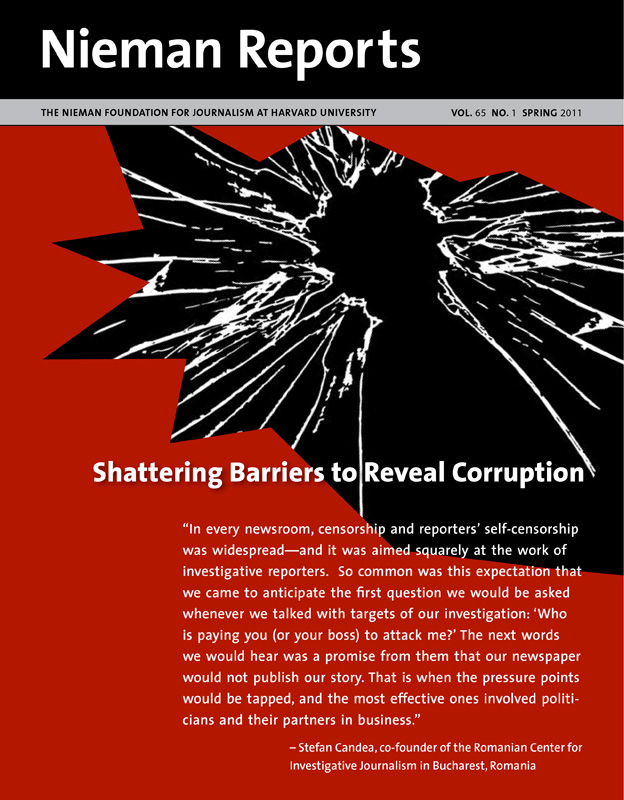2010 has been a violent year for journalists in Mexico in terms of murders and attacks.
RELATED ARTICLE
“The Mexican Press: At the Crossroads of Violence”
- Elia Baltazar and
Daniela PastranaA report by the Center for Journalism and Public Ethics (Centro de Periodismo y Ética Pública) recorded attacks against 139 journalists and 21 media organizations—13 of which involved guns or explosives—in 25 states throughout Mexico. In addition, that report, "State of Freedom of Expression in Mexico 2010" (Situación de la Libertad de Expresión en México 2010), affirmed that two journalists were forced to flee the country after receiving death threats.
According to the Committee to Protect Journalists (CPJ),"Ten [Mexican] journalists were killed, at least three in direct relation to their work." Arrests have been made in only one case.
Although the lack of legal investigations makes it hard to find accurate figures, the National Human Rights Commission (Comisión Nacional de los Derechos Humanos) reports that 36 journalists have been murdered in the course of their work since President Felipe Calderón took office on December 1, 2006.
While it is difficult to track the disappearances of journalists, a continuing and painful expression of the violence is that nine journalists remain missing. The earliest case dates to 2005; three journalists disappeared in 2010, according to CPJ.
RELATED ARTICLE
“The Mexican Press: At the Crossroads of Violence”
- Elia Baltazar and
Daniela PastranaA report by the Center for Journalism and Public Ethics (Centro de Periodismo y Ética Pública) recorded attacks against 139 journalists and 21 media organizations—13 of which involved guns or explosives—in 25 states throughout Mexico. In addition, that report, "State of Freedom of Expression in Mexico 2010" (Situación de la Libertad de Expresión en México 2010), affirmed that two journalists were forced to flee the country after receiving death threats.
According to the Committee to Protect Journalists (CPJ),"Ten [Mexican] journalists were killed, at least three in direct relation to their work." Arrests have been made in only one case.
Although the lack of legal investigations makes it hard to find accurate figures, the National Human Rights Commission (Comisión Nacional de los Derechos Humanos) reports that 36 journalists have been murdered in the course of their work since President Felipe Calderón took office on December 1, 2006.
While it is difficult to track the disappearances of journalists, a continuing and painful expression of the violence is that nine journalists remain missing. The earliest case dates to 2005; three journalists disappeared in 2010, according to CPJ.



